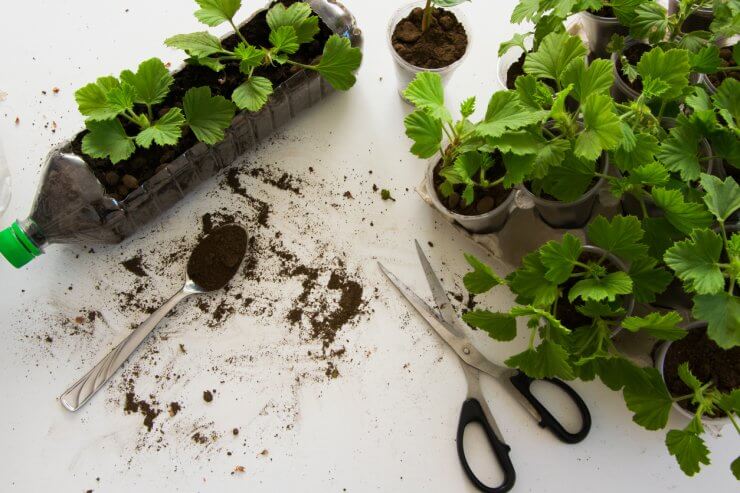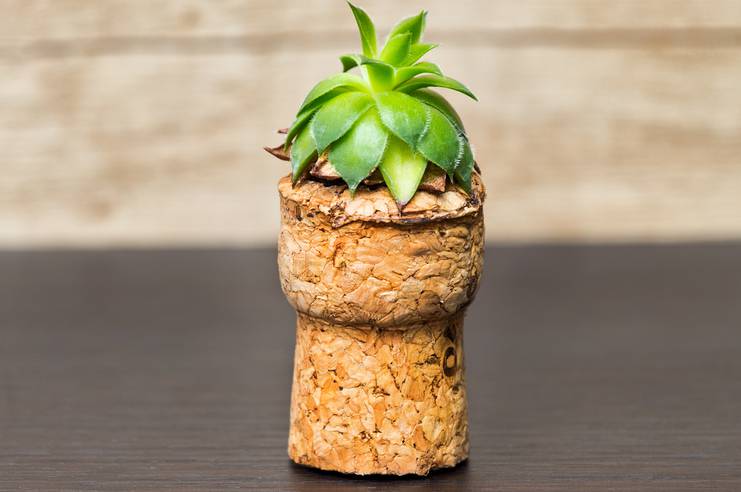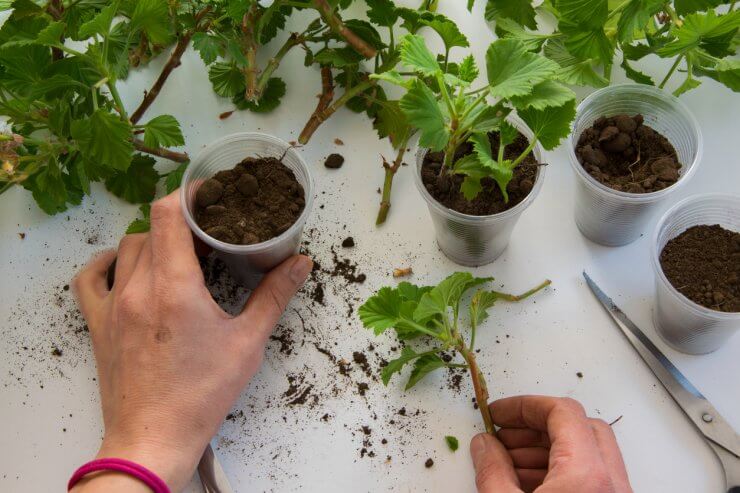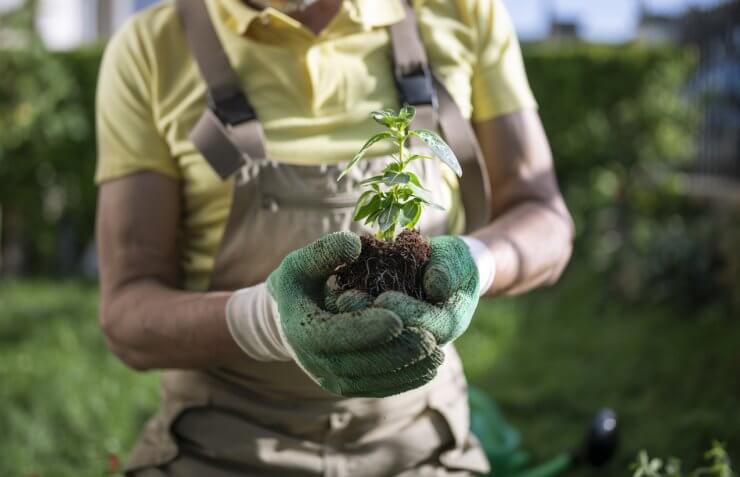
I have a confession. I get a major thrill when I repurpose something I have lying around the house. So when it comes to homes for my plants, I’m all about that DIY plant container life. What’s even better, is when I can repurpose plant containers out of recyclable materials. Because it’s basically free AND I’m using sustainable materials! I’m willing to bet that if you looked around the room you’re sitting in right now, you’ll be able to find at least one bit of recyclable material that could easily be turned into a DIY plant container. Here are some tips and ideas to remember when making your DIY plant containers from recyclable materials.
Plant Container Basics
Maybe it’s a bit obvious but houseplants need sunlight, water, air, and planting material (soil, mulch, or a hydroponic base). When creating a DIY planting container, it’s important to keep those basic needs in mind. Otherwise you could wind up with a soggy orchid with root rot sitting in an antique teapot. (Not that I’m speaking from experience or anything…)
Recyclable Materials 101
By sifting through your recycling bin, you can find nearly everything you need to make DIY plant containers. Plastic bottles, wine bottles, and even mason jars make very nice plant homes and cost next to nothing to create. Of course, you’ll definitely want to wash your bottles and jars thoroughly to remove any leftover food or drink residue. This will help your plant get used to its new home and prevent nasty odors.
Discover 7 top tips for growing, harvesting, and enjoying tomatoes from your home garden—when you access the FREE guide The Best Way to Grow Tomatoes, right now!

Think Outside the Box
Beyond the “usual suspects” found in your recycling bin, get creative! You can think small by re-using old wine corks and turning them into air plant or succulent containers. Or go BIG with taking something like a wooden pallet and turning it into a vertical garden stand with nothing more than your high school woodshop skills. Other materials like burlap coffee sacks or old wooden crates make great DIY planter container options.

Crafting Supplies and Tools
I love crafting. Give me a glue gun, a box cutter, and a ball of twine and I’ll stay occupied for hours. When creating your DIY plant containers from recycled materials, it’s important to use the correct tools for each project. Don’t be afraid to chat with your home and garden store staff. They’ll know what drill bits to use and what methods will work best for more complicated DIY plant container transformations.

Safety!
When you’re working with glass or sharp metal, safety is a top priority. I highly recommend a good pair of work gloves, but the most important accessory when making DIY plant containers is safety goggles. I can hear an elder’s voice in my ear when I start tackling a project, reminding me to “Protect those Peepers!” I’ll say it again because it really is that important: SAFETY GOGGLES!
Do you have any DIY plant containers at home? What are they made out of? How will you make your next DIY plant container from recyclable materials? Share your ideas in the comments!
Discover 7 top tips for growing, harvesting, and enjoying tomatoes from your home garden—when you access the FREE guide The Best Way to Grow Tomatoes, right now!





I’ve seen two quart and one gallon jugs used as small greenhouses.
You cut through the body of the jug, leaving the handle in tact, and it provides the perfect greenhouse effect (as long as you punch holes in the bottom for drainage).
Clear plastic ‘clamshell’ containers ( usually strawberries, blueberries come in these.) are perfect little greenhouses for starting seeds. These help with humidity and of course let in lots of light. Use seed- starter soil and water with a light water spray bottle with room temp water. Seeds sprout quickly.
I used to get huge prescription bottles before my operation. I gave them to a friend to store seeds. I still give her the smaller ones as well. They are great for storing seeds or even small things like tacks or screws.
I have stage 4 cancer and end up with lots of empty prescription bottles! These are great for starting seedlings before planting outside in your gardens! Reuse empty prescription bottles that are anywhere from about 2.5-5” tall and a couple inches in diameter. Drill a couple small holes in the bottoms for drainage. Fill containers with potting soil of your choice and place in a bin for ease in handling. Plant seeds or cuttings as desired and grow until ready for transplanting.
Important to remember drainage for your containers. If you can’t make holes in your repurposed container, you can ‘nest’ a plastic pot inside, with a space at the bottom for drainage.